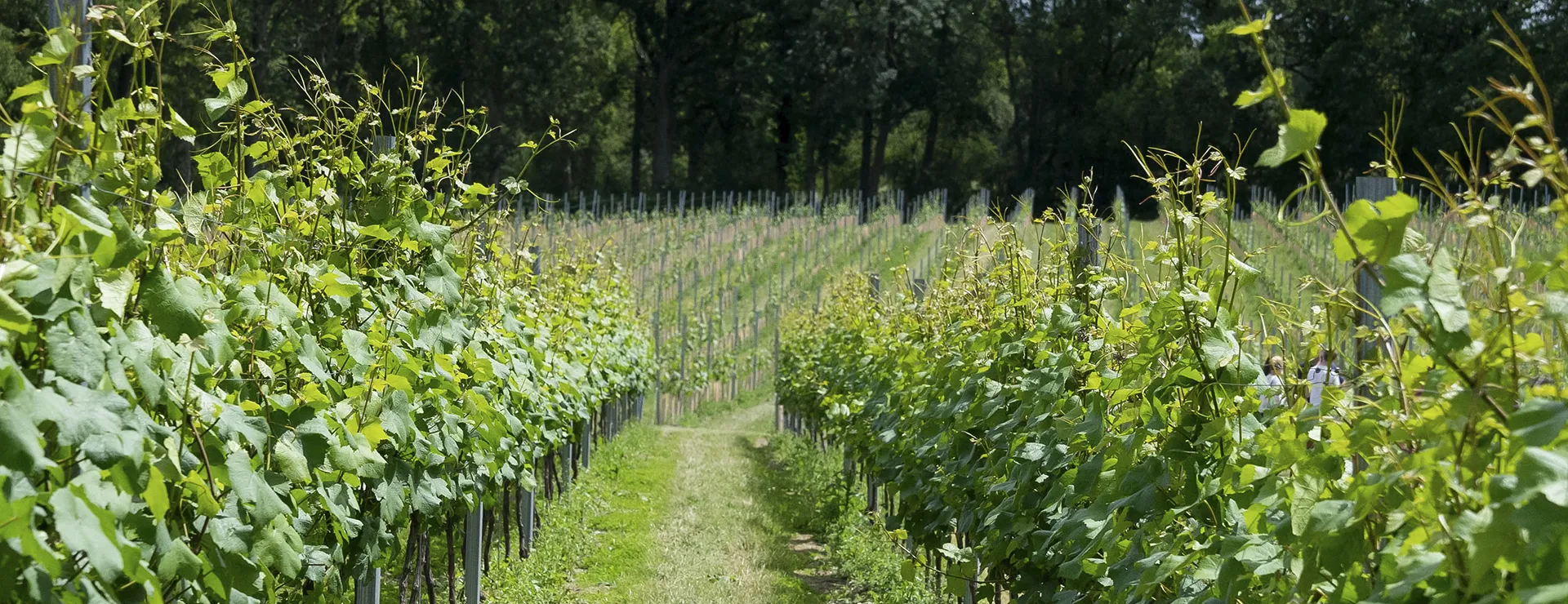To vintage, or not to vintage, that is the question
Picking has just finished in the last of our vineyards, bringing Digby’s harvest season to a close for 2022. We’ve seen some high yields and, as far we can tell, will be seeing some high quality too. As CEO and Head Blender Trevor Clough tastes the early samples of juice, he’s deliberating whether the red grapes are promising enough to warrant a vintage rosé. “Sun, heat and vibrant Pinot Noir – all of these things lead me to hope the special and rare quality will be there for me to declare a 2022 rosé vintage year,” says Trevor. “The proof will be in the tasting over the next few months.”
We adore our playful non vintage styles, but getting sufficiently strong fruit to make a vintage wine (i.e. coming exclusively from that one year’s harvest) only happens about twice a decade for our rosés. You become beholden to that year’s eccentricities but it’s a glorious game, and so our breath is notably bated.
Weather in 2022
You will hardly need reminding of this summer’s record-breaking heat waves. These vastly accelerated the ripening of the grapes and so picking began at Digby’s Hilden Vineyard a full two weeks earlier than normal. Located near Tonbridge, Kent, Hilden had been an existing vineyard partner of Digby’s since 2018, and we officially acquired this superlative site late last year as our first and only owned vineyard. During the season, we’ve been getting more deeply to grips with the land, like the plants’ exceedingly keen foliage requiring additional rounds of leaf stripping – this year more than ever as we wanted to maximise fruit exposure for the best possible ripening.
Looks like it worked, as we didn’t just harvest early but, for the first time, picked the white Chardonnay grapes on the same day as the reds (Pinot Noir and Pinot Meunier). We expect to start with Pinot Noir since this thin-skinned, fragile grape variety usually ripens seven to ten days earlier and doesn’t do well hanging about (it’s not called ‘The Heartbreak Grape’ for nothing). Yet this year, some of our sites picked their Chardonnays before the rest. “Everything was flipped on its head,” says Digby’s Head of Wine Operations, Conor Milne. “It’s a funny year and a quirk of the harvest that the Chardonnays ripened this early. It’s a bit of a mystery, but part of our job is to listen to what the vineyard is telling us.”
As a blending house, we work with a carefully selected set of vineyard partners across Southern England who grow the grapes that we turn into wine. It means that each bottle of Digby Fine English is a fulsome example of this country’s fruit, the different soils and microclimates of each site bringing complexity and character into the bottle. It also means that our harvest period can span the full gamut, so Conor in particular has been busy talking to each vineyard to assess when the grapes are ready; they are then picked by hand, loaded into shallow crates and transported to our winery double-quick, where the rest of the fun begins.
Getting to the winery
Broadly speaking we see the grapes ripen east to west, meaning that our Kentish vineyards are picked first, moving across to Sussex followed by Hampshire, then Dorset. But exceptions are inevitable (like the far South East, jutting out of the map – that unique microclimate made it one of the last this time around) and merely add to the perpetual puzzle of winemaking.
In the winery, we separate the grapes by site to make our base wines – always white, with red in certain years (blending those in later down the line gives the rosés their colour). In the reds we’re looking for phenolic ripeness (leading to colour, tannin and weight of flavour) plus enough sugars for converting into the desired alcohol levels.
“This year is definitely a red wine year,” says Conor, “and we see that from a few folks. The Pinots have come in ripe enough and good in quality for skin contact so we can make phenomenal red base wines. There’ll be lots of rosés getting made this year, across the board.”
So we’re in good company with our English wine colleagues then. And whilst rosés are one thing, vintage rosés, on the other hand…
Trevor is seeking richness and a hint of umami in the red wines’ flavours, with a muscular structure capable of extensive ageing so that it can spend time on its lees before being released to the world, building the sort of complexity, texture and personality that define Digby’s wines.
All that remains to be seen. Keep your fingers tightly crossed as Trevor makes the final call.







